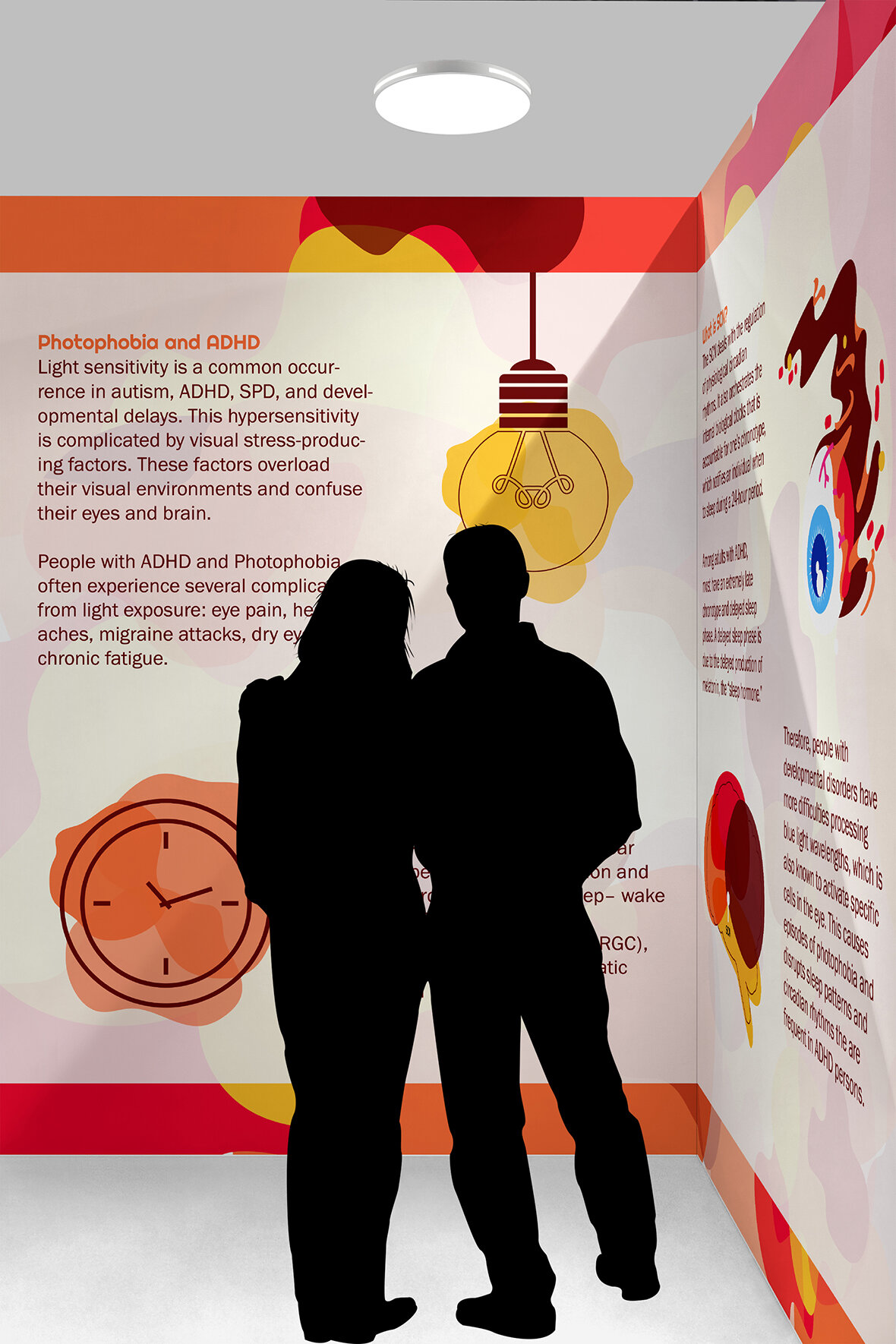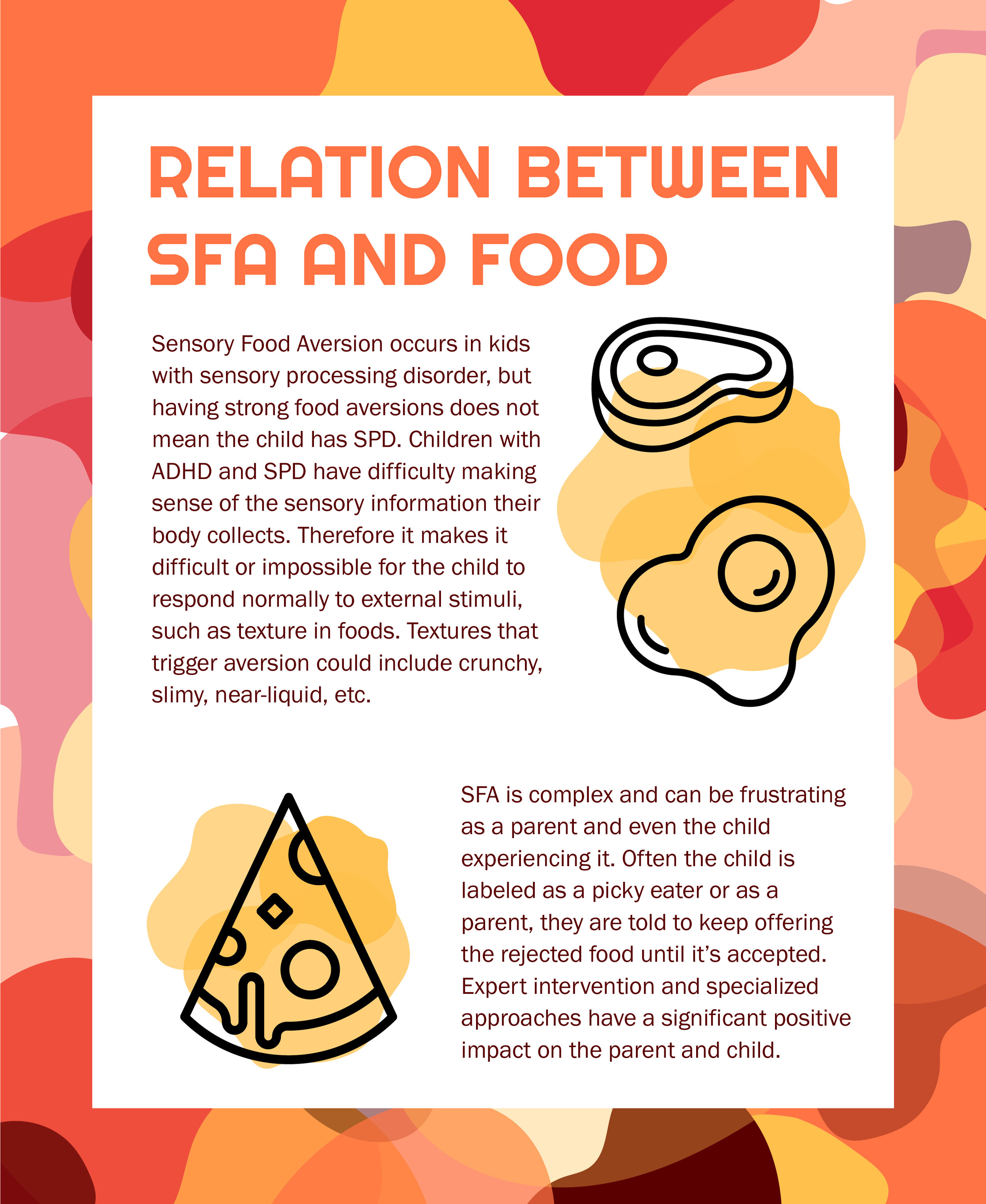Nori Hess

“Because ADHD is not a visible medical disorder people don’t understand that it is just as disabling as those that are very visible.”
-Anonymous
ADHD
An Immersive Educational Stimulation
Attention Deficit Hyperactivity Disorder (ADHD) is a common diagnosed neurobehavioral disorder, which persists through adolescence into adulthood.[1] ADHD is a condition that primarily affects an individual’s attention, executive function, and organization. According to a case study conducted by the Centers for Disease Control and Prevention, about 6.4 million, children in the United States are estimated to have been diagnosed with ADHD.[2] A majority of research and resources focus on medically categorizing and confining people with ADHD into a disabling diagnosis that instantly puts them at a disadvantage. Since the 1900s, ADHD has been a controversial topic because of the concerns revolving around its unclear existence, causes, perceived over-diagnosis, and methods of treatment, especially with the use of stimulants.[3] In addition, the debate of whether ADHD is a disorder or not creates tension in the medical world. Stigmatization of the mentally ill has a long tradition, and the word “stigmatization” itself indicates negative connotations.[4] Over time, this topic has been overused, therefore, irrelevant and questionable to whether or not it exists.
This experience will address the question of how experiential learning and design can influence the perspectives individuals have about ADHD. To bring attention and awareness to this topic, an ADHD experience composed of five linked rooms will utilize the space of a one-story building to immerse a group, no bigger than five people in an educational stimulation.
The goal of this research is to reduce stigma by taking the audience through a series of rooms based on the five senses of physical hypersensitivity of ADHD: sight, sound, smell, taste, and touch. Research has examined the viability of using stimulations as a tool for influencing changes in participants’ perspectives about the different realities of others.[1] Therefore, this immersive stimulation is to achieve a memorable experience that will be carried and passed on to future generations. ADHD is a difference in cognition, it doesn’t decide the success of the individual. Today is the time to reshape the perceptions of others about the controversial topic of ADHD. Change happens like a ripple effect; it only takes one person to start it. Be the Change.
[1] Wilens, Timothy E., and Thomas J Spencer. “Understanding attention-deficit/hyperactivity disorder from childhood to adulthood.” Postgraduate medicine, vol. 122, no 5. (2010): 97-109. https://www.ncbi.nlm.nih.gov/pmc/articles/PMC3724232/. Doi:10.3810/pgm.2010.09.2206.
[1] Rössler, Wulf. “The stigma of mental disorders: A millennia-long history of social exclusion and prejudices.” EMBO reports 17,no. 9 (2016): 1250-3. doi:10.15252/embr.201643041.
[1] Denevi, Timothy. “Hyper: A Personal History of ADHD.” Simon&Schuster (2014).
[1]Rössler, Wulf. “The stigma of mental disorders: A millennia-long history of social exclusion and prejudices.” EMBO reports 17,no. 9 (2016): 1250-3. doi:10.15252/embr.201643041.
[1] Moak, S.C., Walker, J.T., Earwood, M. et al. “Using Reentry Stimulations to Promote Changes in Attitude toward Offenders: Experiential Learning to Promote Successful Reentry.” AM J Crim Just 45 (2020): 126-144. https://doi.org/10.1007/s12103-09500-9.

ADHD is an experience composed of five linked rooms that will utilize the space of a one-story building to immerse a group, no bigger than five in an educational stimulation.

ROOM 1: PHOTOPHOBIA AND ADHD
The first room the audience will encounter will be lit with LED lighting, white floors, and colorful walls that hold informational pieces. The information discusses Photophobia in relation to ADHD as an attribute of visual hypersensitivity. All design elements are meant to support the information provided about Photophobia. In addition, each informational pieces will start with an introduction to an attribute of hypersensitivity based off the five senses and a conclusion of how to help.

ROOM 4: SENSORY PROCESSING DISORDER AND ADHD
The fourth room will consist of grassy hillsides, wallpaper of the sky, informational signs, and toys the audience can interact with. The idea behind this room is to hone in on the physical attribute of sensory processing disorder and how it relates to ADHD. The audience will be able to explore this space at their own pace and experience different textures along the way. Each informational pieces will start with an introduction to an attribute of hypersensitivity based off the five senses and a conclusion of how to help.

ROOM 5: SENSORY FOOD AVERSION AND ADHD
The final room the audience will go through focuses on the sensory food aversion which is commonly associated with taste hypersensitivity and sensory processing disorder. There will be food and drink provided for the audience while they are free to mingle and discuss their experience with each other. In addition, the information on the walls further discusses the topic of sensory food aversion and how it relates to ADHD.






















